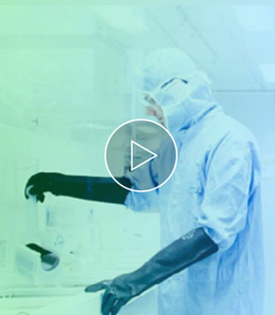HOOK™ Sulfhydryl Reactive Biotin Reagents and Kits for Highly Efficient Protein Labeling, G-Biosciences
Supplier: G-Biosciences
The use of biotin for non-radioactive labeling of proteins and nucleic acids has now become an increasingly popular technique in life science research
G-Biosciences' HOOK™ Sulfhydryl Reactive Biotin Reagents react with protein-free sulhydryl groups. These sulfhydryl reactive reagents are more specific and react only with free sulfhydryl residues (-SH or thiol groups). The side chain of the amino acid cysteine is the most common source of free sulfhydryl groups. If free sulfhydryl residues are not available, they can be generated by the reduction of disulfides (-S-S-) with reducing agents such as mercaptoethylamine, or by modifying lysine ε-amines with Traut’s reagent or SATA. After reduction, excess reducing agent must be removed before coupling. In addition, a metal chelating agent (EDTA), an anti-oxidant, should be used to reduce the chances of re-oxidation of sulfhydryls to disulfides. There are three different reactions employed to couple biotin reagents to sulfhydryl residues and involve either iodoacetyl, maleimide, or pyridylthiol groups.
G-Biosciences' HOOK™ Sulfhydryl Reactive Biotin Reagents are each available as the reagent alone or as part of a biotin labeling kit. The labeling kits are designed and supplied with all the necessary reagents, equipment and instructions necessary for optimal reaction conditions, efficient labeling, removal of unbound biotin, and quantification of biotin labeling, for the conjugation of biotin to protein primary sulfhydryl groups.
Each kit is supplied with 25 milligrams of the specific HOOK™ Sulfhydryl Reactive Biotin Reagent, a specific Optimizer Buffer™ for enhanced conjugation, Spin-OUT™ columns for rapid (less than 10 minute) purification of labeled protein, and reagents to determine the amount of biotinylation. The kits are each designed for the coupling of 1 to 10 milligrams protein in 1 milliliter buffer, suitable for 10 couplings.
In addition, several of the more commonly used HOOK™ Biotin reagents are available in G-Biosciences' OneQuant™ format. The OneQuant™ format prevents loss of reagent due to repeated weighing, as each vial contains only 1 to 2 milligrams of the specific HOOK™ Biotin Reagent.
Several factors must be considered when coupling a biotin reagent to a protein to ensure a successful reaction. The primary consideration is the selection of the biotinylation reagent itself. G-Biosciences offers a wide range of biotin reagents with variations in their reactive groups, spacer arm lengths, solubility, membrane permeability and reversibility. All of these factors must be considered and are dependent on your protein/peptide.
Información para pedidos: Accessories included.
Learn more

About VWR
Avantor is a vertically integrated, global supplier of discovery-to-delivery solutions for...